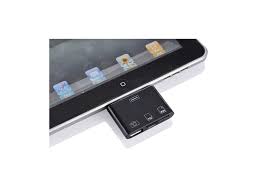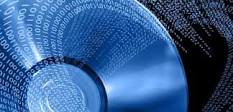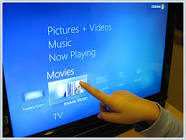Connecting devices allow hardware devices to communicate with each other. The most popular example of connecting devices nowadays is wireless connections. Wireless devices transfer and receive information through infrared or radio waves. The three kinds of wireless connections are Bluetooth, infrared, and WiFi (wireless fidelity). It is most frequently used in business and personal computer environments. Connecting devices, especially Wireless devices, bring convenience to our life and work.
Wireless connecting devices
Bluetooth
Bluetooth uses short-range radio waves over distances of 9 metres. For example, Bluetooth devices such as a keyboard, PDA, cell phone, mouse or computer can connect to each other wirelessly and the distance can be up to 10 meters (33 feet). Some of the Bluetooth devices can support headsets and printers.
Infrared
Infrared also called IR or IrDA (Infrared Data Association) has a frequency below what our eye can see. It is broadly used in infrared light, cell phone and TV remotes. IR wireless is used in wireless technology in devices or systems that convey data through infrared radiation, for instance, infrared wireless printing or infrared keyboards.
WiFi
WiFi (wireless fidelity) uses radio waves for connection over distances up to around 91 metres, usually in a network environment. Wifi can be used to connect Local Area Networks [LAN], to connect cellphones to the Internet to download music and other multimedia, to allow PC multimedia content to be stream to the TV (Wireless Multimedia Adapter), and to connect video game consoles to their networks (Nintendo WiFi Connection).


FROM:
http://en.wikipedia.org/wiki/Connecting_devices
First-generation
Initially, optical discs were used to store music and computer software. The laser disc format stored analog video signals, but commercially lost to the VHS videotape cassette, due mainly to its high cost and non-re-recordability; other first-generation disc formats were designed only to store digital data and were not initially capable of use as a video medium.
Most first-generation disc devices had an infrared laser reading head. The minimum size of the laser spot is proportional to its wavelength, thus wavelength is a limiting factor against great information density, too little data can be stored so. The infrared range is beyond the long-wavelength end of the visible light spectrum, so, supports less density than any visible light colour. One example of high-density data storage capacity, achieved with an infrared laser, is 700MB of net user data for a 12 cm compact disc.
Second-generation
Second-generation optical discs were for storing great amounts of data, including broadcast-quality digital video. Such discs usually are read with a visible-light laser (usually red); the shorter wavelength and greater numerical aperture[2] allow a narrower light beam, permitting smaller pits and lands in the disc. In the DVD format, this allows 4.7 GB storage on a standard 12 cm, single-sided, single-layer disc; alternately, smaller media, such as the MiniDisc and the DataPlay formats, can have capacity comparable to that of the larger, standard compact 12 cm disc.
 Third-generation
Third-generation optical discs are in development, meant for distributing high-definition video and support greater data storage capacities, accomplished with short-wavelength visible-light lasers and greater numerical apertures. The Blu-ray disc uses blue-violet lasers and focusing optics of greater aperture, for use with discs with smaller pits and lands, thereby greater data storage capacity per layer. In practice, the effective multimedia presentation capacity is improved with enhanced video data compression codecs such as H.264, and VC-1.
Fourth-generation
That is for now, the following formats go beyond the current third-generation discs and have the potential to hold more than one terabyte (1TB) of data: Holographic Versatile Disc, LS-R and Protein-coated disc
Third-generation
Third-generation optical discs are in development, meant for distributing high-definition video and support greater data storage capacities, accomplished with short-wavelength visible-light lasers and greater numerical apertures. The Blu-ray disc uses blue-violet lasers and focusing optics of greater aperture, for use with discs with smaller pits and lands, thereby greater data storage capacity per layer. In practice, the effective multimedia presentation capacity is improved with enhanced video data compression codecs such as H.264, and VC-1.
Fourth-generation
That is for now, the following formats go beyond the current third-generation discs and have the potential to hold more than one terabyte (1TB) of data: Holographic Versatile Disc, LS-R and Protein-coated disc


FROM:
http://en.wikipedia.org/wiki/Optical_disc
A touchscreen is an electronic visual display that can detect the presence and location of a touch within the display area. The term generally refers to touching the display of the device with a finger or hand. Touchscreens can also sense other passive objects, such as a stylus. Touchscreen is common in devices such as all-in-one computers, tablet computers, and smartphones.


The touchscreen has two main attributes. First, it enables one to interact directly with what is displayed, rather than indirectly with a cursor controlled by a mouse or touchpad. Secondly, it lets one do so without requiring any intermediate device that would need to be held in the hand. Such displays can be attached to computers, or to networks as terminals. They also play a prominent role in the design of digital appliances such as the personal digital assistant (PDA), satellite navigation devices, mobile phones, and video games.
Storage device

A storage device is a hardware device capable of storing information. There are two storage devices used in computers; a primary storage device such as computer RAM and a secondary storage device such as a computer hard disk drive. In the picture to the right, is an example of a Drobo external secondary storage device.
Primary storage device
Alternatively referred to as internal memory and main memory, primary storage is a storage location that holds memory for short periods of times while the computer is on. For example, computer RAM and cache are both examples of a primary storage device. This storage is the fastest memory in your computer and is used to store data while it's being used. For example, when you open a program data is moved from the secondary storage into the primary storage.
Secondary storage device
Alternatively referred to as external memory and auxiliary storage, secondary storage is a storage medium that holds information until it is deleted or overwritten regardless if the computer has power. For example, a floppy disk drive and hard disk drive are both good examples of secondary storage devices. As can be seen by the below picture there are three different storage on a computer, although primary storage is accessed much faster than secondary storage because of the price and size limitations secondary storage is used with today's computers to store all your programs and your personal data.
Off-line storage
Term used to describe any storage that is removable and cannot be accessed by the computer once removed. A good example of off-line storage is a floppy disk. Off-line storage allows a user to store information that will not be affected by computer viruses or hardware failure.


